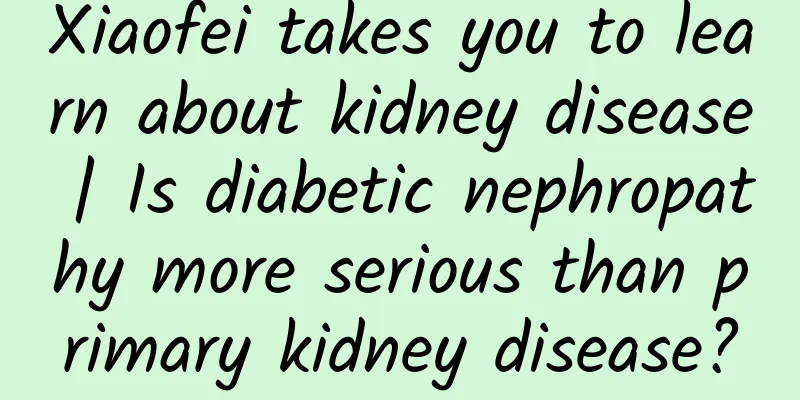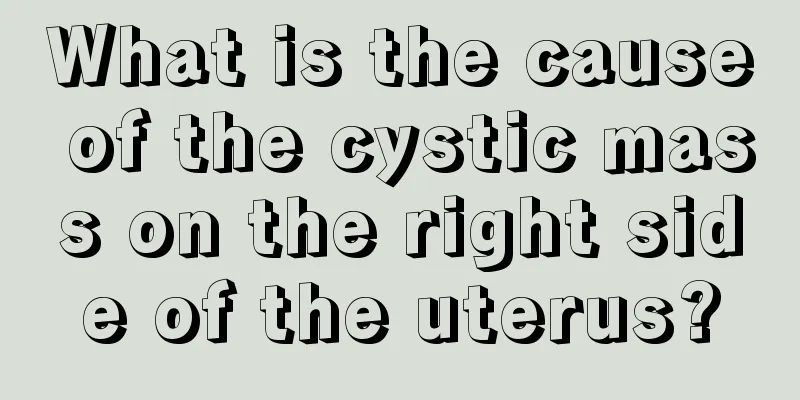Symptoms of intrauterine adhesions after curettage, the harm is so serious

|
Some female friends did not take good care of themselves after undergoing a uterine curettage, which resulted in uterine adhesions, often with lower abdominal pain, abnormal pregnancy, abnormal menstruation, pain when pressing the lower abdomen, and other adverse symptoms. 1. Symptoms of intrauterine adhesions 1. Lower abdominal pain: If the patient's condition continues to worsen, abdominal pain will occur, and some may even have trouble sleeping at night. Generally, about one month after an artificial abortion or curettage, sudden spasmodic pain in the lower abdomen occurs. Some patients have severe abdominal pain, restlessness, difficulty moving, and even passing gas and defecation are painful. 2. Pregnancy abnormalities: Patients are prone to pregnancy failure, including early and mid-pregnancy miscarriage, premature birth, ectopic pregnancy, missed miscarriage, intrauterine fetal death, etc. Infertility is the main symptom of this disease. This disease often causes blockage of women's fallopian tubes, which prevents the fertilized egg from implanting normally, ultimately leading to infertility. Even if pregnant, recurrent miscarriages and premature births may occur. 3. Menstrual abnormalities: Amenorrhea may occur in patients with complete cervical adhesion. If there is partial adhesion of the cervix or partial destruction of the endometrium, the patient will experience scanty menstruation but normal menstrual cycles. If it is caused by cervicitis or other inflammation, it will lead to amenorrhea in patients. Some patients will experience abnormal phenomena such as irregular menstruation, prolonged menstruation, dark menstrual blood, etc. 4. Pain when pressing the lower abdomen: If a female friend suffers from intrauterine adhesions, she will also experience severe abdominal pain. During the examination, it will be found that the size of the uterus is generally normal, the texture is relatively soft, and there are obvious tenderness symptoms. 2. Can intrauterine adhesions be cured? Intrauterine adhesions can be cured. In general, medication, physical therapy, hysteroscopic surgery and other treatment methods can be used to treat different degrees of intrauterine adhesions. If hysteroscopic laparoscopy or angiography is used to separate adhesions in the pelvic cavity, it is a very effective method to restore the function of the fallopian tubes. The surgical wound is small and the recovery is quick. Pregnancy is possible after hysteroscopic separation treatment. Currently, the most reliable diagnostic standard for intrauterine adhesions is hysteroscopy. Hysteroscopy is an endoscope used for examination and treatment within the uterine cavity. It is a minimally invasive gynecological diagnosis and treatment technology. It has a magnifying effect, allowing doctors to understand the lesions in the uterine cavity more intuitively and accurately during the diagnosis and treatment process, and determine the location, range, and degree of adhesions. |
<<: What causes high prolactin?
>>: How to separate intrauterine adhesions?
Recommend
How to care for private itching during pregnancy
Embarrassing changes in private parts during preg...
Do you brush your teeth correctly every day? Oral experts teach you how to "unlock" the correct brushing posture
Are you brushing your teeth correctly? Some peopl...
How often should you use a hair mask?
Almost every girl hopes to have black and beautif...
What are the symptoms of kidney deficiency in women?
Many people immediately think of men when they th...
What are the treatments for vulvar itching during menstruation?
Women start menstruating after entering puberty. ...
It’s no exaggeration, people can really be “angered to death”!
Review expert: Wu Xinsheng, deputy chief physicia...
Can sesame oil be used to treat cracked nipples?
Cracked nipples are one of the common diseases du...
How to insert metronidazole suppository
Important reminder: Metronidazole embolic drugs a...
What are the causes of breast hyperplasia?
There are many causes of breast hyperplasia, and ...
Can bitter hazelnuts be eaten? What will happen if you eat bitter hazelnuts?
Hazelnuts are nuts. Among the "four major nu...
Causes of blood clots during menstruation
Everyone must know the importance of menstruation...
Understand foodborne diseases and prevent food safety issues
What is foodborne disease? my country's Food ...
Why do women snore when they sleep?
What is the reason why women snore? In daily life...
Inducing menstruation takes effect in five minutes
Many women are anxious when their menstruation is...
What is the best way to treat cervical erosion?
With the significant improvement of modern scienc...









